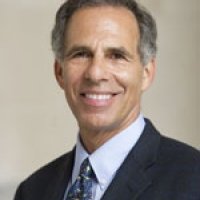Demographic & Environmental Dynamics Shape 'Global Trends 2030' Scenarios
“However rapid change has been over the past couple decades, the rate of change will accelerate in the future,” states the newest quadrennial report from the National Intelligence Council (NIC), Global Trends 2030: Alternative Worlds. Released late last year, the report identifies the “game-changers, megatrends, and black swans” that may determine the trajectory of world affairs over the next 15 years, including demographic dynamics and natural resource scarcity.
Mathew Burrows, the lead author, was joined by Steven Gale, a senior advisor at the U.S. Agency for International Development (USAID); Jack Goldstone, professor of public policy at George Mason University; and Richard Cincotta, a political demography consultant for ECSP, at the Wilson Center on February 26 to discuss the implications of the report.
Megatrends: Population and Environment Dynamics
Since its first publication in 1997, the Global Trends series has created a “tidal wave that ricochets throughout the academic community and into international relations,” said Cincotta, pointing out that others governments and intelligence services have replicated its inclusion of non-traditional security concerns into futures analysis.
This year’s edition examines four plausible scenarios for “rapid and vast geopolitical changes” and four megatrends that the NIC suggests will drive these scenarios: demography (both rapid aging and continued growth), natural resource scarcity, individual empowerment, and diffused global power.
In high-income countries, increases in average lifespan and decline in fertility rates have resulted in an increasingly large proportion of people over the age of 65. Countries with older populations may experience slower GDP growth, as governments attempt to fund social security and pension programs. As the world ages, the number of “youthful” countries will decline. Instances of internal and international conflict may decrease as well, as countries with large youthful populations are 2.5 times more likely to experience violent conflict than other states.
The growth and empowerment of the global middle class will be a related and spectacular trend, said Burrows. While Global Trends 2025 placed a strong emphasis on the demographic phenomenon of “youth bulge,” the 2030 edition is focused on what happens as those youth cohorts move up the socioeconomic ladder. According to the report, the number of people of middle-class status around the world (about one billion today) will double or triple by 2030. The most rapid growth will occur in India, China, and other Asian countries.
“We need to be careful about this brave new world of massive consumption,” Burrows warned. A rising global middle class will increase demand for consumer goods and put pressure on natural resource availability. Global demand for food, water, and energy will increase by 35 percent in the next 20 years, he said.
However, Burrows does not believe we are headed towards a “world of scarcity,” in part because of the impact of new resource and health technologies. The report identifies technological innovations as game-changers that will frame future global resource management, including breakthroughs in bio-based energy technology, genetically modified crops, and disease response and management.
The NIC predicts that globalization, demand for labor, and income inequalities between countries will increase the rate of international migration. According to the International Organization for Migration, there are currently more than 214 million international migrant workers worldwide already.
Internal migration from rural to urban areas will also increase, accelerating the growth of many urban areas. By 2030, 60 percent of the world’s population will live in cities, and mass urbanization combined with population growth will put a strain on housing availability, construction materials, and energy in fragile states.
Utter Disaster?
“Things seem to be getting worse faster than even some of the most negative prognoses,” said Goldstone said, and in his opinion, the report should have included a fifth scenario: utter disaster.
“We are going to be seeing more evidence that the climate is changing through the experience of extreme events,” Goldstone said, such as the devastating flooding in Pakistan in 2010 and Thailand in 2011; Hurricane Sandy and Typhoon Bopha in 2012; U.S. drought in 2012; and other recent instances.
“Poorer countries are more exposed to climate change,” he said, as richer countries have the capital to respond to extreme events through insurance schemes and adaptation.
Goldstone also said he expects “localized Malthusian problems.” For example, he pointed out that the population of Nigeria is projected to jump from 158 million in 2010 to 390 million people by 2050, even assuming a 50 percent decline in fertility.
And while trends in armed conflict have decreased over the past two decades, displaced populations have risen just as quickly. “We’ve done a better job containing the effects of conflict,” said Goldstone, but “refugees are still displaced, and this is a number, I fear, environmental conflict situations will drive up in the future.” Today, there are more than 40 million refugees worldwide, with at least one million people displaced by the current conflict in Syria.
Perceptions of socioeconomic justice also play a role: “If people feel that their inequality is the result of being held down by unfair manipulation of political power, social tensions may arise,” said Goldstone. “People must be able to see themselves and others get ahead.”
Futures Analysis for International Development
There is a “renewed interest” in futures analysis at USAID, said Gale, but the structure of the organization and funding mechanisms makes it difficult to actually do.
The success of USAID is dependent on understanding these long-term trends, he said: “If we don’t get these trends right, in understanding how they influence development, I think we’re going to jeopardize a lot of our past and ongoing investments.”
For example, “USAID is still rolling out laptops in countries where most young people are on mobile devices,” said Gale. Adapting more traditional programing to the rapid pace of change is a continuous challenge, he said.
But he noted it is important to distinguish the difference between global trends and dynamics within individual countries. For example, widespread aging will mostly be experienced in high-income countries, whereas countries in sub-Saharan Africa will continue to be youthful for many decades to come.
Partly in response to rapid projected changes, USAID is beginning to weave into their programming a focus on the concept of resilience – the ability of communities and countries to adapt to and withstand stresses. For example, in the Horn of Africa, Gale said USAID has established Joint Planning Cells to integrate and coordinate development and relief initiatives in response to frequent droughts. According to USAID, the program plans to directly assist 10 million people and decrease the amount of people negatively affected by drought by more than 1 million by 2017.
Preempting Disruption?
“We need to change the way we think about international aid,” Goldstone said. Along with Gale, he emphasized a “system-wide” and more interdisciplinary approach to development that enables developing regions to cope with “black swans”– low probability but highly destructive events that may cause massive global disruption.
For example, the report states that a severe global pandemic could affect “every corner of the world in less than six months,” or very rapid climate change could quickly disrupt the food security of whole regions. Other shifts, such as a more liberal Iran or democratic China, may have positive global implications.
“In reality, the future probably will consist of elements from all the scenarios,” states the report. “We hope that a better understanding of the dynamics, potential inflection points, and possible surprises will better equip decision-makers to avoid the traps and enhance possible opportunities for positive developments.”
Drafted by Maria Prebble, edited by Schuyler Null and Meaghan Parker.
Speakers

Virginia E. and John T. Hazel Professor of Public Policy, George Mason University; Wilson Center Fellow


Hosted By

Environmental Change and Security Program
The Environmental Change and Security Program (ECSP) explores the connections between environmental change, health, and population dynamics and their links to conflict, human insecurity, and foreign policy. Read more
